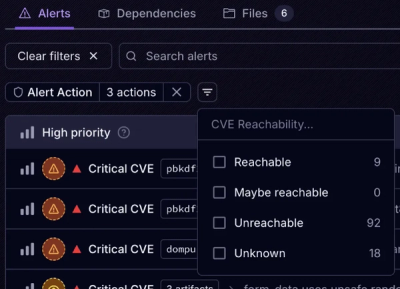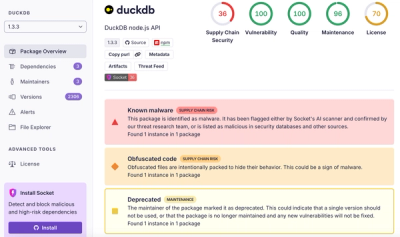
Product
Introducing Tier 1 Reachability: Precision CVE Triage for Enterprise Teams
Socket’s new Tier 1 Reachability filters out up to 80% of irrelevant CVEs, so security teams can focus on the vulnerabilities that matter.
A screen capture utility that works with PyQt6, PySide6, PyQt5, PySide2, PyQt4, and PySide.
A screen capture utility that works with PyQt6, PySide6, PyQt5, PySide2, and PySide.
Make sure you have PyQt6, PySide6, PyQt5, PySide2, or PySide installed.
Then install pyqt-screen-capture:
pip install pyqt-screen-capture
from pyqt_screen_capture import hwc_bgrx_8888_screen_capturer
screen_capturer = hwc_bgrx_8888_screen_capturer()
# Get next screen frame (as numpy array in HWC BGRX 8888 format)
frame = next(screen_capturer)
# Example: Convert to RGB and display with matplotlib
import matplotlib.pyplot as plt
plt.imshow(frame[:, :, [2, 1, 0]]) # Convert BGR to RGB
plt.show()
import cv2
from pyqt_screen_capture import hwc_bgrx_8888_screen_capturer
for frame in hwc_bgrx_8888_screen_capturer():
# Process frame (OpenCV, etc.)
cv2.imshow('Screen Capture', frame[:, :, :3]) # Use BGR channels only
key = cv2.waitKey()
if key & 0xFF == ord('q'):
break
You MUST use the shared ndarray between yields, as the underlying buffer is freed afterward:
from pyqt_screen_capture import hwc_bgrx_8888_screen_capturer
screen_capturer = hwc_bgrx_8888_screen_capturer()
r1 = next(screen_capturer)
# OK to use r1 here
r2 = next(screen_capturer)
# OK to use r2 here, DO NOT USE r1 HERE!
This project modifies code automatically determining which Qt package to use from pyqtgraph, available under the MIT License
Contributions are welcome! Please submit pull requests or open issues on GitHub.
This project is licensed under the MIT License. See the LICENSE file for details.
FAQs
A screen capture utility that works with PyQt6, PySide6, PyQt5, PySide2, PyQt4, and PySide.
We found that pyqt-screen-capture demonstrated a healthy version release cadence and project activity because the last version was released less than a year ago. It has 1 open source maintainer collaborating on the project.
Did you know?

Socket for GitHub automatically highlights issues in each pull request and monitors the health of all your open source dependencies. Discover the contents of your packages and block harmful activity before you install or update your dependencies.

Product
Socket’s new Tier 1 Reachability filters out up to 80% of irrelevant CVEs, so security teams can focus on the vulnerabilities that matter.

Research
/Security News
Ongoing npm supply chain attack spreads to DuckDB: multiple packages compromised with the same wallet-drainer malware.

Security News
The MCP Steering Committee has launched the official MCP Registry in preview, a central hub for discovering and publishing MCP servers.